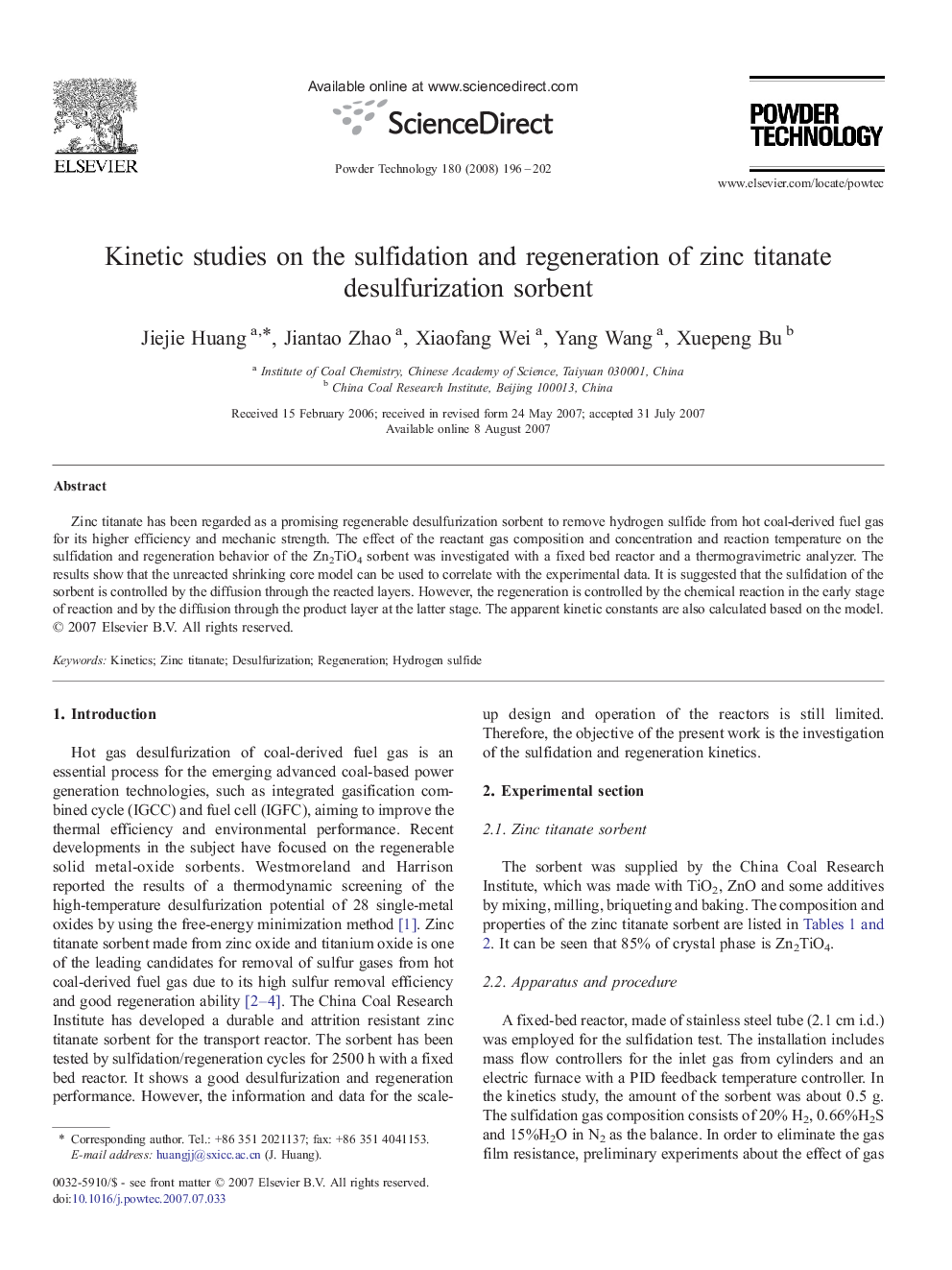| کد مقاله | کد نشریه | سال انتشار | مقاله انگلیسی | نسخه تمام متن |
|---|---|---|---|---|
| 238746 | 465771 | 2008 | 7 صفحه PDF | دانلود رایگان |

Zinc titanate has been regarded as a promising regenerable desulfurization sorbent to remove hydrogen sulfide from hot coal-derived fuel gas for its higher efficiency and mechanic strength. The effect of the reactant gas composition and concentration and reaction temperature on the sulfidation and regeneration behavior of the Zn2TiO4 sorbent was investigated with a fixed bed reactor and a thermogravimetric analyzer. The results show that the unreacted shrinking core model can be used to correlate with the experimental data. It is suggested that the sulfidation of the sorbent is controlled by the diffusion through the reacted layers. However, the regeneration is controlled by the chemical reaction in the early stage of reaction and by the diffusion through the product layer at the latter stage. The apparent kinetic constants are also calculated based on the model.
This is an SEM photograph of the sulfided Zn2TiO4 sorbent. The zinc titanate is a crystal phase and can be acted as the desulfurizer at higher temperature. The sulfidation leads to the textural changes, such as the decreasing of pore structure and specific surface area, which determines that the sulfidation kinetics of the sorbent is mainly controlled by the gas diffusion through the reacted layers.Figure optionsDownload as PowerPoint slide
Journal: Powder Technology - Volume 180, Issues 1–2, 14 January 2008, Pages 196–202